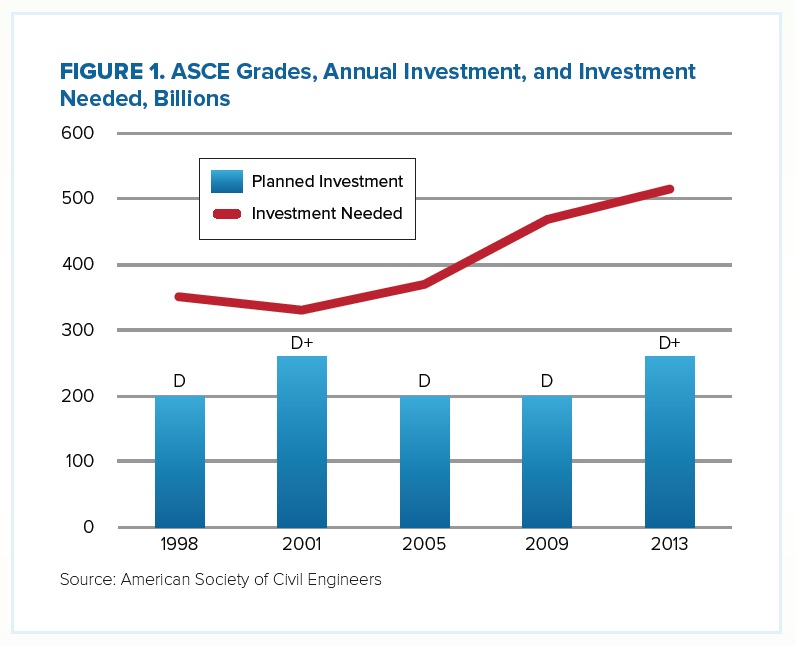BLUEGREEN ALLIANCE
Much of the physical infrastructure of the United States is in a state of disrepair. As documented by the American Society of Civil Engineers (ASCE) in their 2013 Report Card for America’s Infrastructure, our roads, transit systems, dams, and airports need billions of dollars of investment to return them to adequacy. Our water, air, and land are threatened by aging systems designed to provide safe drinking water, handle hazardous waste, treat wastewater, and manage our solid waste. Half of our schools were built to educate the generation that is now retiring, and our electric grid is widely recognized as being incapable of meeting the needs of our changing energy system.
While the problem has reached critical levels, it is not new. ASCE gave the infrastructure an overall grade of “D+” in 2013. However, in the five Report Cards issued since 1998, the only other overall grade ASCE has given it has been a “D.” While last year’s “D+” grade represents the unfortunate apex of our infrastructure’s status, the amount of funding needed to bring the infrastructure up to a grade of “B” is also at its peak, requiring $3.6 trillion in spending over the next seven years to reach that goal. (Figure 1)
At the same time that the need for infrastructure investment has been growing, however, public investment in infrastructure has fallen precipitously. As a share of Gross Domestic Product (GDP), infrastructure spending is by far at its lowest point in 20 years. (Figure 2)
All of this is taking place in the context of an economy still recovering from the recession of 2008-2009 with employment in construction at its lowest level in 16 years.2 Ironically, as our infrastructure continues to deteriorate and unemployment continues to plague the very workers needed to bring it back to a reasonable state of repair, public investment in infrastructure is flagging. As a share of GDP, public expenditures on infrastructure spiked toward the end of the recession, due both to shrinking GDP and investment funded by the American Recovery and Reinvestment Act of 2009 (the Recovery Act). Since then, however, infrastructure investment has fallen to its lowest levels since peaking in the late 1970’s.3
As a result, our overall infrastructure grade improved slightly to a “D+,” but the gap between planned infrastructure expenditures and the amount of funding needed to bring it to an overall “B” grade has risen to more than $1.6 trillion dollars.
This study examines the economic impacts— and the potential sustainability benefits—of filling that gap by accelerating infrastructure investment sufficiently to achieve a grade of “B” within the next 10 years.
Download full version (PDF): Making the Grade
About the BlueGreen Alliance
www.bluegreenalliance.org
The Blue Green Alliance is a national, strategic partnership between labor unions and environmental organizations dedicated to expanding the number and quality of jobs in the green economy.
Tags: American Society of Civil Engineers, ASCE, BlueGreen Alliance, Infrastructure Report Card







 RSS Feed
RSS Feed